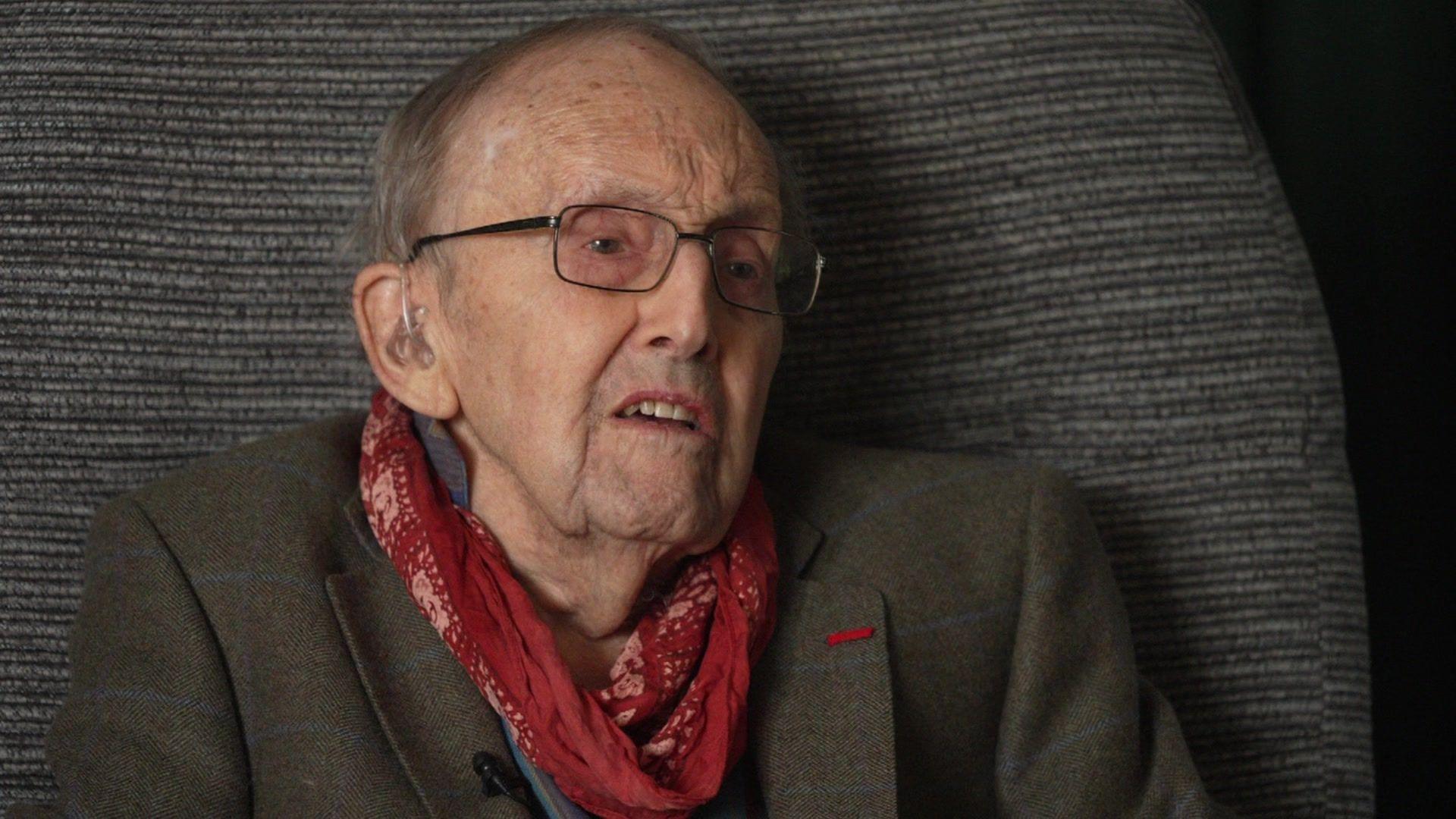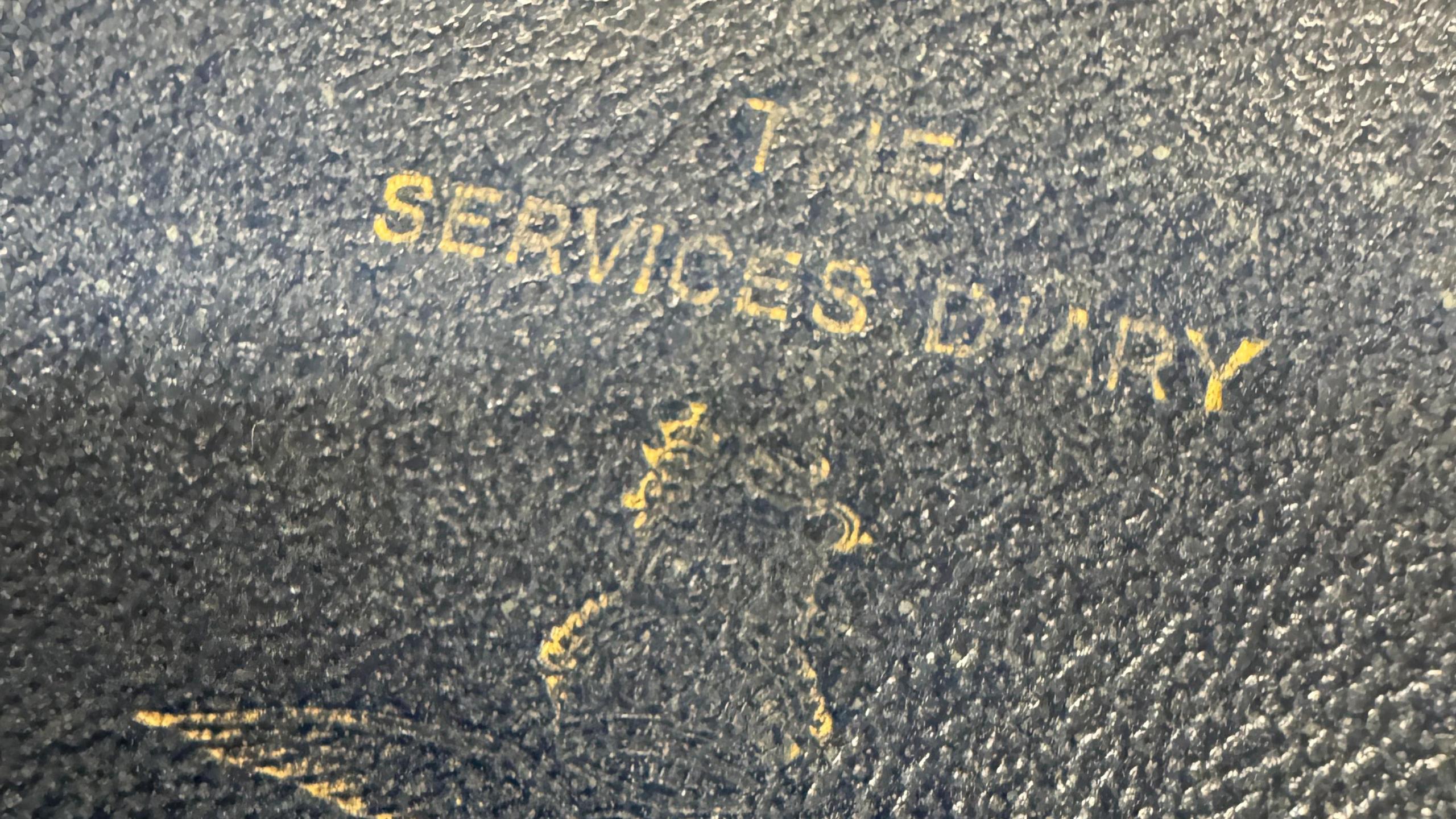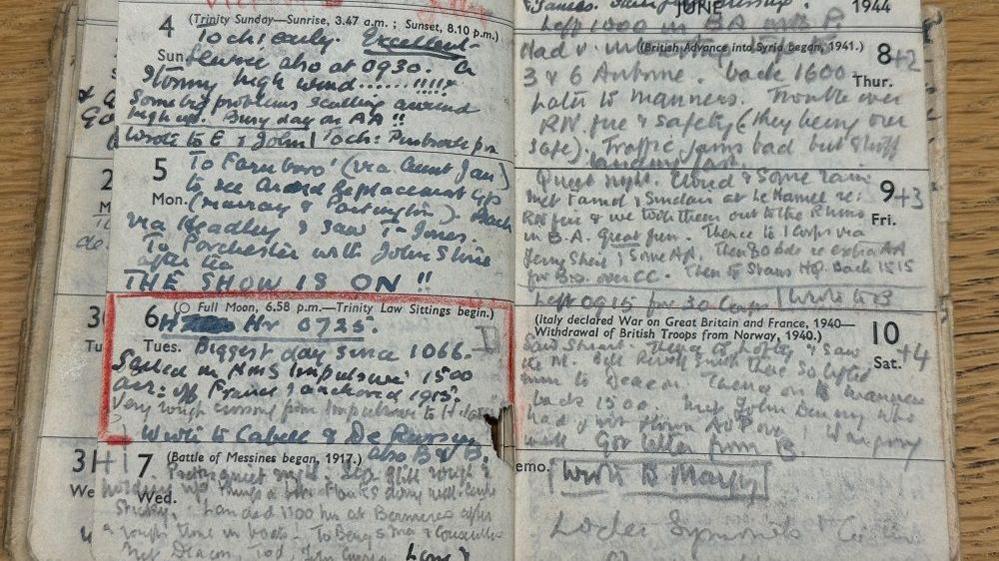'Biggest day since 1066': Army officer on D-Day
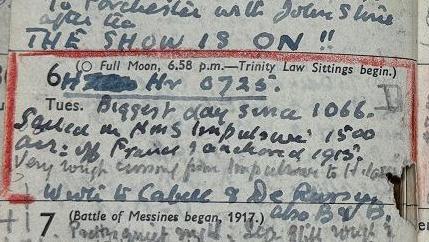
Image caption, Jack Parham outlined D-Day in red, calling it the "biggest day since 1066"
1 of 3
- Published
A diary from an army officer involved in D-Day described the World War Two Normandy landings as the "biggest day since 1066".
Jack Parham, who grew up on a farm in rural Wiltshire, kept a meticulous, tiny pocket diary, along with sketches of his involvement in the conflict.
He landed on the afternoon of D-Day, in 1944, co-ordinating and leading troops.
His diary is new kept by the Wiltshire & Swindon History Centre. Ruth Butler, from the centre, called him an "artist, an inventor, also a consummate soldier".
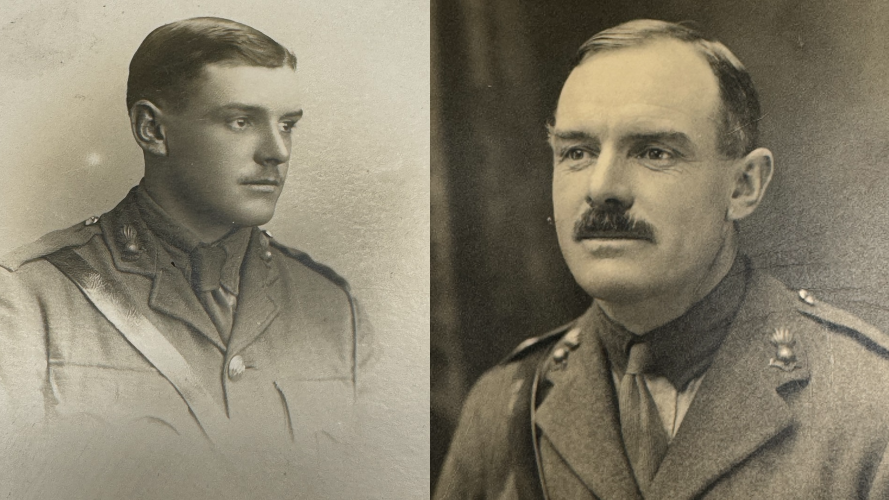
Jack Parham started in the army during World War One and was a Major General by 1945
Jack Parham was a brigadier at the time of D-Day after starting in the army in World War One. He was promoted in the interwar years and by the end of the Second World War, had become a Major General.
He loved to record things, even if the diary was "very small, it's a pocket diary, he's cramming a lot of information in."
Ms Butler explained to BBC Wiltshire that the entries are "very, very real".
"The fact you see this small pocket diary...its well-worn, its well scribbled in and he's got all sorts of information in the front covers," she added.
What were the D-Day landings?
- Published6 June 2024
D-Day: ‘I often wonder why I lived while others died’
- Published4 June 2024
Cotswolds town played 'top secret' role in D-Day
- Published6 June 2024

Ruth Butler from the Wiltshire & Swindon History Centre
Brig Parham wrote everything down, even going back and adding annotations where he felt something needed adding.
He also sketched - with captions.
That includes the caravan he stayed in to go and meet troops and lots of planes.
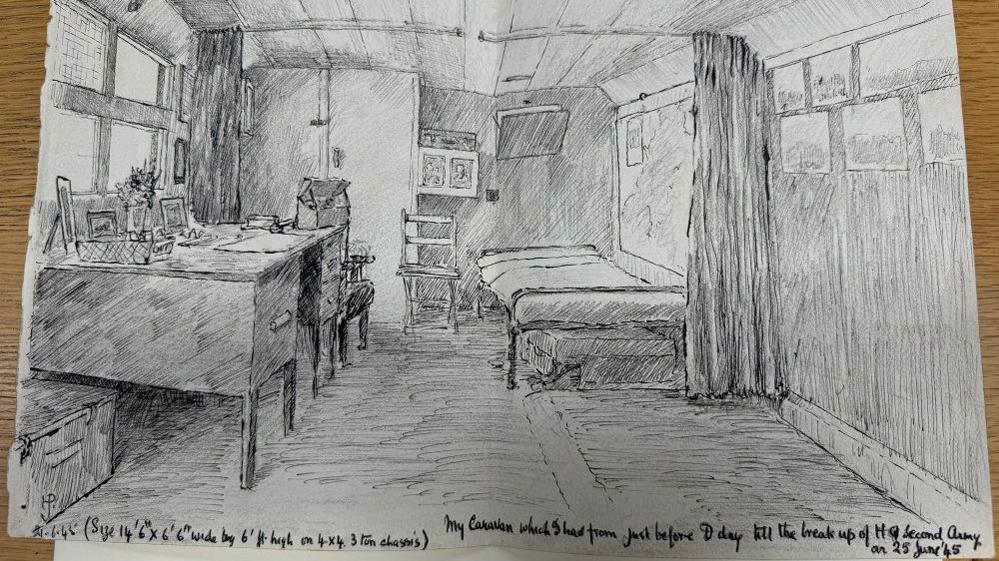
He captioned his sketches, like this of his caravan "from just before D-Day" until 25 June 1945
Brig Parham was a huge fan of airplanes, including aerial photography, which he pushed as a way to help the military.
"He basically sketched every plane built from 1911 onwards" said Ms Butler.
"Here's a young teenager thinking aerial photography is going to be really useful - he's persuading pilots to take him up."
She explained that he also learned to fly and sail himself, revolutionising the way artillery works, using aerial observation to carry out barrages and map terrain.
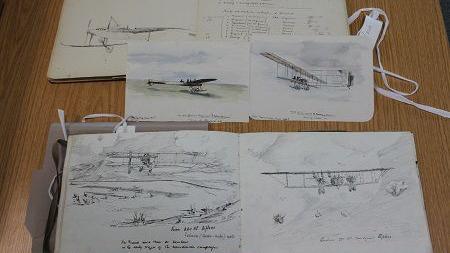
Mr Parham loved to sketch, planes in particular
"He was an incredible individual."
Ms Butler said pictures of him "always looks open and approachable".
He eventually retired to Suffolk.
"When he died, the obituaries were very warm, he was a well-respected and well-liked officer and just got stuck in," she added.
Follow BBC Wiltshire on Facebook, external, X, external and Instagram, external. Send your story ideas to us on email or via WhatsApp on 0800 313 4630.
Related topics
- Published5 June 2024
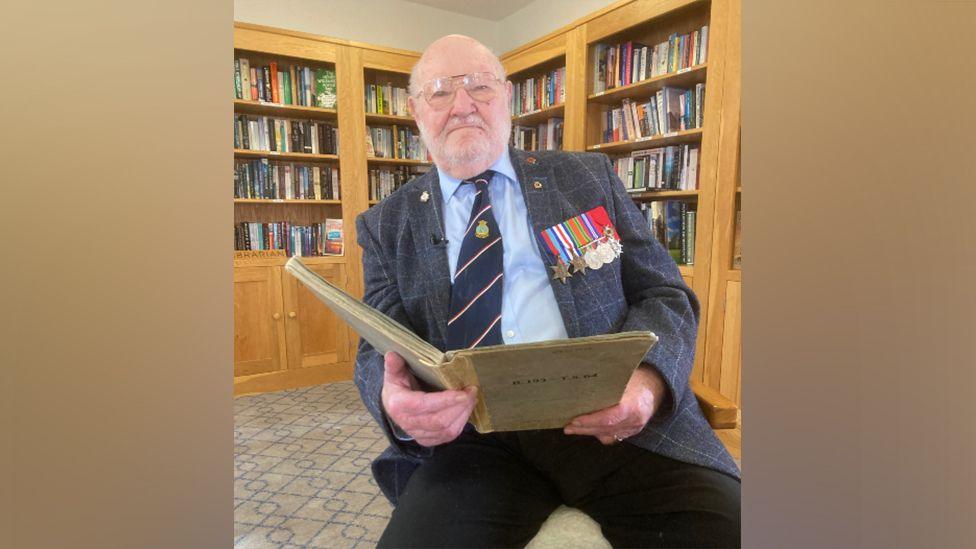
- Published3 June 2024
